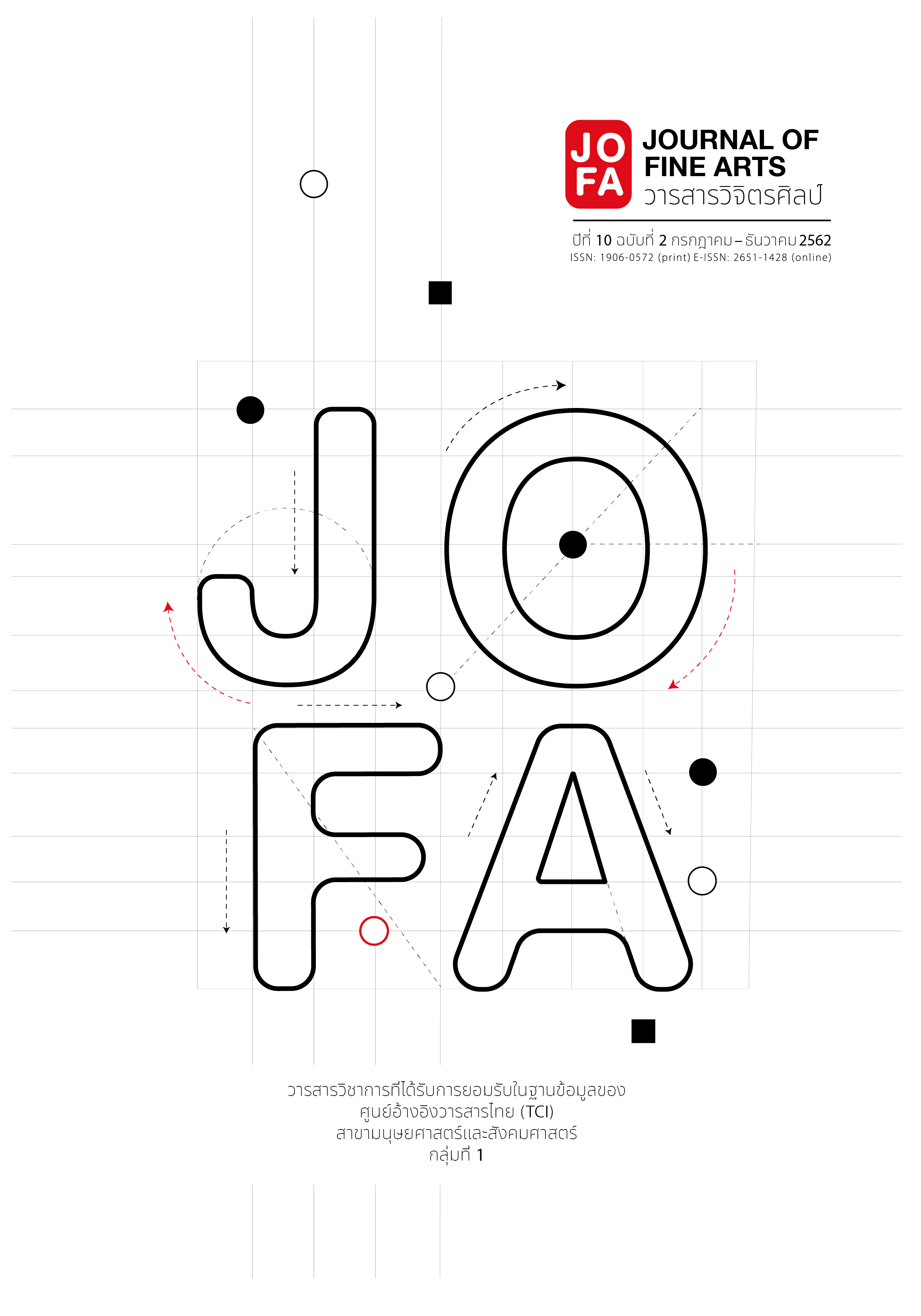Concept and Practice of Design Intervention.
Main Article Content
Abstract
The main objective of this article is to study the concept of design Intervention, which means to use design process to intervene and improve a problematic situation. The process of the intervention can be divided into three steps, the first step is to define the situation, the second step is to analyse the target group, and the third step is to apply participatory design.
To define the situation, which consists of place, actors, and social activities, designer can adopt anthropological participatory observation to specify design intervention brief. After that,
designer can apply stakeholder analysis to identify the target group and encourage them to participate in the design process.
This concept was tested in media design for Chiang Mai Design Week 2016. The project not only produced media for the festival, but also used the participatory design process to create the interaction between Thailand Creative and Design Center and design community in Chiang Mai for future collaboration.
Designers who are interested in design intervention must change the goal of design from controlling the outcome of the design to working together with the target group. Problem-solving and teamwork skills are also necessary to achieve this goal.
Article Details
References
2. ชลธิดา พระเมเด “กว่าจะมาเป็น Chiang Mai Design Week 2016.” ศูนย์สร้างสรรค์งานออกแบบ (TCDC). สืบค้นเมื่อวันที่ 9 กรกฎาคม 2018. https://www.tcdcconnect.com /content/10801/.
3. ปรัชญา คัมภิรานนท์. “มานุษยวิทยาการออกแบบ” วิทยานิพนธ์ศิลปกรรมศาสตรดุษฎีบัณฑิต, สาขาวิชาศิลปกรรมศาสตร์ คณะศิลปกรรมศาสตร์ จุฬาลงกรณ์มหาวิทยาลัย, 2560.
4.พรสนอง วงศ์สิงห์ทอง. ประวัติศาสตร์นฤมิตรศิลป์. กรุงเทพฯ: สำนักพิมพ์แห่งจุฬาลงกรณ์มหาวิทยาลัย, 2547.
5.สมพร รุ่งเรืองกลกิจ. แนวปฏิบัติทางคลินิกเพื่อการบำบัดทางสังคมจิตใจผู้ป่วยโรคซึมเศร้าสำหรับพยาบาลจิตเวชในสถานบริการระดับตติยภูมิ. กรุงเทพฯ: กรมสุขภาพจิต กระทรวงสาธารณสุข, 2554.
6. Armstrong H. Participate: designing with user-generated content. New York: Princeton Architectural Press, 2011.
7. “Art Intervention.” Tate. Accessed July 2, 2018. https://www.tate.org.uk/art/art-terms/a/art-intervention.
8. “The Design Process: What is the Double Diamond?” Design Council UK. Accessed July 3, 2018.
https://www.designcouncil.org.uk/news-opinion/design-process-what-double-diamond.
9. Gunn, W., Otto, T., and Smith, R. Design Anthropology: theory and practice (3rd ed.). London: Bloomsbury Academic Publishing, 2015.
10. Hunter, Mat. “What is Design and Why It Matters.” Creative Industries Council UK (CIC). Accessed July 3, 2018. https://www.thecreativeindustries.co.uk/uk-creative-overview/news-and-views/view-what-is-design-and-why-it-matters.
11. Lowe, V., and Tzanakopoulos, A. “Humanitarian Intervention.” The Social Science Research Network (SSRN). Accessed July 2, 2018. https://papers.ssrn.com/sol3/papers.cfm?abstract_id=1701560.
12. MacArthur, J. “Stakeholder analysis in project planning: origins, applications and refinements of the method.” Project Appraisal 12, (1997): 251-265.
13. Shea, A. Designing for social change: strategies for community-based graphic design. New York: Princeton Architectural, 2012.
14. Stone, T. Managing the design process: implementing design. Gloucester: Rockport, 2010.


